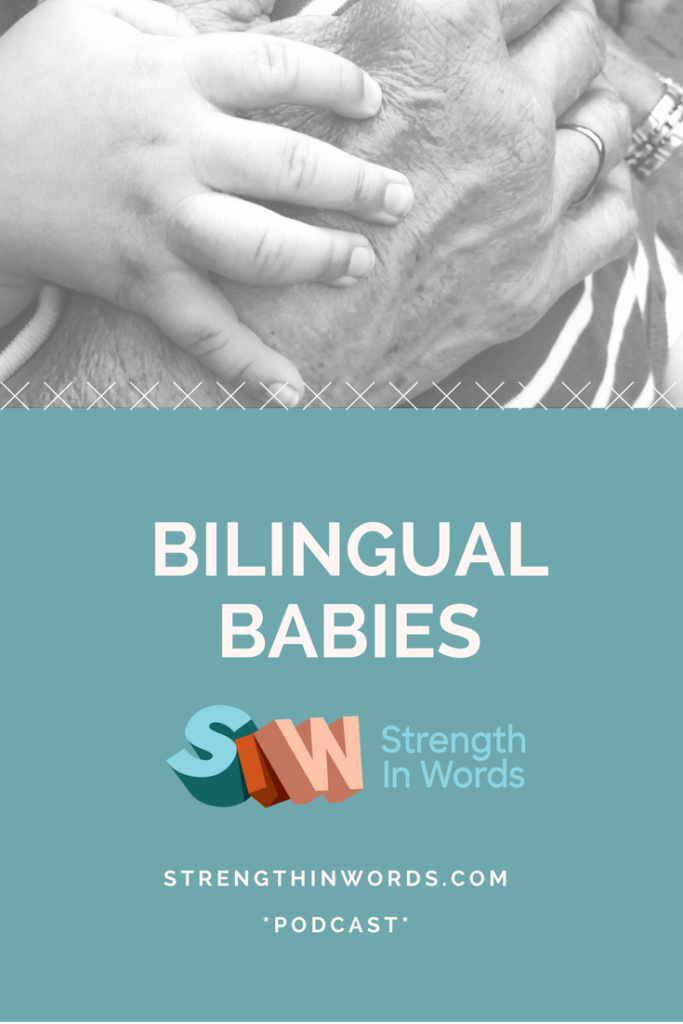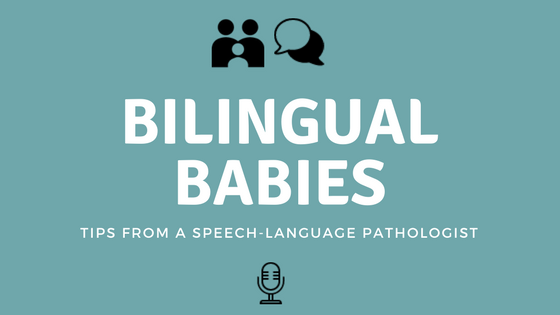Families raising or considering raising a child who is multilingual are confronted with many questions.

On this episode of Learn With Less, Ayelet delves into the topic of multilingualism and bilingualism.
The research is clear (a child learning two or more languages will not be “stunted!”) and the methodology, though sometimes not so clear-cut, is basically a “one way or the other” approach.
Below is the transcript of this week’s “Developmental Thought,” an excerpt from the full episode.
For additional information, music, play ideas and the complete interactive family experience, please listen to the entire episode.
There is a long history of misconceptions when it comes to raising multilingual children, and these are primarily related to the false belief that exposing young children to multiple languages will somehow cause or contribute to a language delay or disorder.
>>Don’t Miss Our Corresponding Blog Post!<<
While it may be true that an infant or toddler who is learning two or more languages simultaneously sometimes demonstrates a slight delay in expressive language (or, what they are able to say), this is not generally what we as speech-language pathologists would consider in clinical terms to be a true “language delay.”
Think about how much more auditory information a baby exposed to multiple languages is processing… how much more information he must measure and sort, and store for later.
The most important thing to consider here is that if a child has true difficulty acquiring speech and language in one language, that problem will show up in both languages… and is unrelated to the exposure to multiple languages.
Simultaneous and Sequential Learning
So, what are the best ways to expose a child to multiple languages. Like anything else when it comes to raising children, there’s no “single best solution” for EVERY family; however, there are a few ways that are considered best practice, and from which you can choose depending on your family’s unique situation. Essentially, these can be split into two major camps, known as Simultaneous or Sequential learning.
Simultaneous language learning refers to the use of two or more languages from birth or shortly thereafter, and sequential language learning refers to the use of only one language in the home, followed by exposure to another language (or often, the community language) when your little one starts school.
Since we live in the “real world,” and not in a vacuum, life doesn’t always work in these clean categories. Try not to fret too much about the details, and remember that the more exposure you give your baby to listen to and practice using each language in everyday situations (especially during daily routines and rituals), the more opportunities you are giving him to learn!
How Bilingual Language Development Happens
What does bilingual language development look like compared to monolingual language development in an infant or toddler? Obviously, there are variations and no two children are exposed to exactly the same amount of one language versus another (even, sometimes, in the same family!), but in general a young child’s developing skills in two or more languages will depend on the quality of the experience that child has with each, and, of course, the amount of experience hearing and using both languages.
Bilingual Output
As far as expression is concerned, both monolingual and bilingual children often speak their first word around the age of 12 months or one year, and by age two, most monolingual and bilingual children will have started to put two words together to express themselves. It’s normal that the grammatical rules of one language might be applied to another, or vocabulary from each language might be used within the same sentence or expression.
These are considered normal aspects of learning multiple languages. Especially with “sequential language learning,” or learning one language after another has already been introduced, young children may experience a period of time when they focus on listening and understanding the new language, or the differences between the two languages. This is a typical occurrence in bilingual language development, and is known as a “silent period.” It can last several months, and is a totally normal phase!
Another typical part of early bilingual or multilingual language development is known as “language loss,” which describes the child’s focus on one language over another. You might hear your little one start to respond back to you in only one language, even if he once responded to, say, one parent in one language and the other parent in another. This may have to do with personal preference of the child, with more exposure to one language over another in a social context or with peers, perhaps, or really, a variety of factors that may or may not be obvious!
What Do We Do To Help?
So, how do we help our children become proficient in multiple languages? Well, the same way we encourage communication development with monolingual children! Last week, in our episode, “Experiential Learning,” we discussed the fact that our children’s (as well as our) context for learning is based in experience. Therefore, the more multi sensory experiences we give our children in any and all languages, the more they learn.
As I have alluded to before, musical experiences and early literacy experiences are fantastic vehicles for language learning, as are any other experiences which incorporate movement, visuals, sounds, etc. Language in context and interaction – through a live human person vs. a screen (whether that’s a tablet, a television, a computer, etc.) will be your most effective tool.
When To Call For Back-Up
What happens if your child is having difficulty communicating, or doesn’t seem to be making progress acquiring language? Developmental research suggests that two major strategies are important. One, that you speak to your child in the language with which you are most comfortable, and two, that you don’t make major changes in the way you interact with your little one.
Essentially, try not to take drastic measures that potentially stress out your young child (remember how much language is related to the social/emotional bond you create with your child!), and model the language (or languages!) in which you and your partner are most proficient – even if these are different from the majority language used in the community in which you live!
When receiving speech and language services within the infant and toddler years, it’s considered best practice to make every attempt to find a speech-language pathologist who can provide services in your child’s home language (or, when there is more than one home language, in one of those languages your child is most often exposed to). Part of this is so that the therapist can communicate with your child effectively, and part of it is so he or she can communicate effectively with you, the caregiver!
Early intervention is much, much more effective when parent education is a major component, and when caregivers can learn about the basis for the kinds of therapeutic techniques a therapist is using, so that they can carry those over (as appropriate) throughout the week, in every other hour that the therapist is not conducting therapy!

